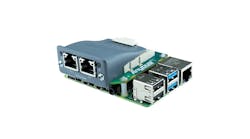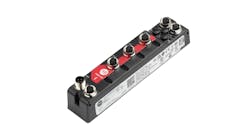Operator Interfaces Go Mobile: Why and how to implement them for your systems
How Much HMI is Enough for your Machine?
This edition of the Control Design Essentials series focuses on HMI solutions, and discusses the wide range of solutions available both in sophistication and cost.
[javascriptSnippet]
Mobile operator interfaces for machines and robots started out as laptop PCs and have evolved to tablets and smartphones. By whatever the mobile device, reasons for use are the same.
“Mobile devices make crucial information available instantly, where it’s needed,” says Scott Kortier, technical evangelist with Wonderware by Schneider Electric. “Machines keep running optimally because operators can respond quickly to customer and technician needs. Access to machine data anywhere can limit downtime and waste material or allow operators to ‘see’ remote or poorly accessible locations.”
Smartphones and tablets have a wide range of functions useful for mobile operator interface, notes Derrick Stacey, solutions engineer with B&R Industrial Automation. “An operator could use the device’s camera or accelerometer to aid in the diagnosis of maintenance issues,” he says. Built-in GPS functionality can be used to locate operators for security and safety purposes, and scanners can be used to read barcodes.
Learn More: Going Mobile? Things You Should Know
“As packaging machines become smart machines, there is a need for immediate information that can only come via remote devices,” observes Mike Wagner, global OEM segment business manager for packaging at Rockwell Automation. “Preventive maintenance schedules can be integrated into the control system. As the time comes to replace worn parts, the control system can send an SMS or text message directly to the operator or maintenance engineer to reduce unscheduled downtime.”
When using mobile devices, a few basic implementation choices need to be made, starting with app- or browser-based access. An app is great because it provides rapid, one-touch access to specific information and allows quick interaction in a proscribed fashion. “Equipped with a mobile device, operators using apps such as our WebVisu can monitor PLCs, as well as collect and analyze critical performance and operational data,” explains Charlie Norz, product manager for Wago I/O systems. “Multiple security levels can be defined to enable task-based login strategies. Apps also provide improved response to real-time events as the user can check status or take action on-site or on the go.”
Nothing beats the quick access and convenience of an app, but not all suppliers have an app available for remote access to their automation systems. And, even if they did, a separate app would be required for each HMI or controller, which could quickly become unwieldy.
Browser-based access can’t match the convenience of an app, but it does provide a more universal means of remote access as many HMIs and controllers have built-in Web servers, allowing them to be accessed from any browser.
“Standards such as HTML5 and JavaScript languages permit the display of the machine interface on any mobile device with a Web browser,” says Daymon Thompson, TwinCAT 3 product specialist at Beckhoff Automation. “In this way, the machine builder has each mobile operating system (OS) covered in one fell swoop including Windows mobile OS, Android, iOS, Apple iOS and more.”
Another key choice is the network—either Wi-Fi or the Internet. “Products like industrial Wi-Fi radios help create local networks available for wireless access via tablets and computers within your plant floor,” notes Andres Suazo Wildt, product marketing specialist—serial & process fieldbus, at Phoenix Contact USA.
A local Wi-Fi network provides a high level of built-in security, but access is limited to its coverage area. Connecting the Web-server platform to the Internet yields worldwide access, a great advantage but also a possible security risk.
As mobile operator interface proliferates, some see a future where traditional local interface devices are eliminated. “A machine often only needs a local operator interface for initial setup or for troubleshooting problems,” says Cindy Hollenbeck, VP Marketing with SoftPLC. “Machine controllers, such as our PACs with an embedded Web server, provide a great solution in these applications. Web pages stored in the controller provide a browser-based operator interface that can be viewed on a mobile device, both locally and remotely, whenever needed—saving cost, physical space and maintenance costs of a dedicated HMI that is rarely used.”





